Are you looking to start a dropshipping business in 2025? Dropshipping is one of the most popular business models for entrepreneurs and online retailers.
With a dropshipping store, you can sell products without keeping any inventory or managing to ship yourself. This guide will show you how to set up a Shopify dropshipping store and start dropshipping in 2025.
We’ll cover everything from setting up your Shopify account to finding reliable dropshipping suppliers and installing the right Shopify dropshipping apps.
By the time you’re done reading, you’ll have all the knowledge and confidence to launch your successful Shopify dropshipping store!
How does dropshipping work?
Dropshipping is a popular way to start selling products online without storing or managing inventory. In dropshipping, retailers partner with a third-party supplier who holds the inventory and ships orders directly to customers.
When a customer places an order on the retailer’s website, the retailer forwards the order information to their supplier, who then fulfills and ships it.
The retailer never has to touch or store any of the inventory but is responsible for marketing and collecting payment from customers. This method of ecommerce can be very beneficial as it requires little capital and overhead costs, allowing retailers to test products without having to invest in large amounts of inventory upfront.
Why Use Shopify for Dropshipping?
Shopify is an excellent platform for dropshipping, as it provides various features and tools to simplify the process. It allows you to store your products in one centralized location and manage orders, shipments, and customer accounts.
Shopify also offers multiple payment gateways to accept customer payments quickly and easily. Additionally, you can use Shopify’s built-in marketing tools to help promote your store and drive more sales.
Finally, Shopify has a range of analytics tools to help you understand how your business is performing and make data-driven decisions about how to grow your business further. With all these advantages, Shopify provides a great way for dropshippers to set up their business quickly and efficiently.
2025 Guide To Dropship on Shopify: (Step-by-Step)
We have spent our time with expert suggestions to make dropshipping on Shopify easy! Follow this 5-step method to dropship on Shopify.
Step #1: Figure Out Your Niche
The first step to starting any business is knowing what product to sell to scale high. Below you will understand how to choose the right product to sell online.
- Research keywords
Research keywords related to your products on the internet using keyword searching apps like keyword planner to understand which keyword is searched the most by your potential customer.
- Find trendy products
Search for trendy keywords to increase the chances of higher product sales. Use google trends to get a graphical overview of the product’s demand online.
- Check profitability
Lastly, determining the profit earned by selling your products is essential. For example, choosing a product with a high-profit margin is the best way to stay safer.
Step #2: Sign Up on Shopify
Once you know your niche, you can jump to the Shopify website. To sign up on Shopify, put your email id on its homepage and click “Start a free trial.” Then, provide your password and store name to Shopify, use the namecheck app to decide the best name for your store, and click “Create your store.”
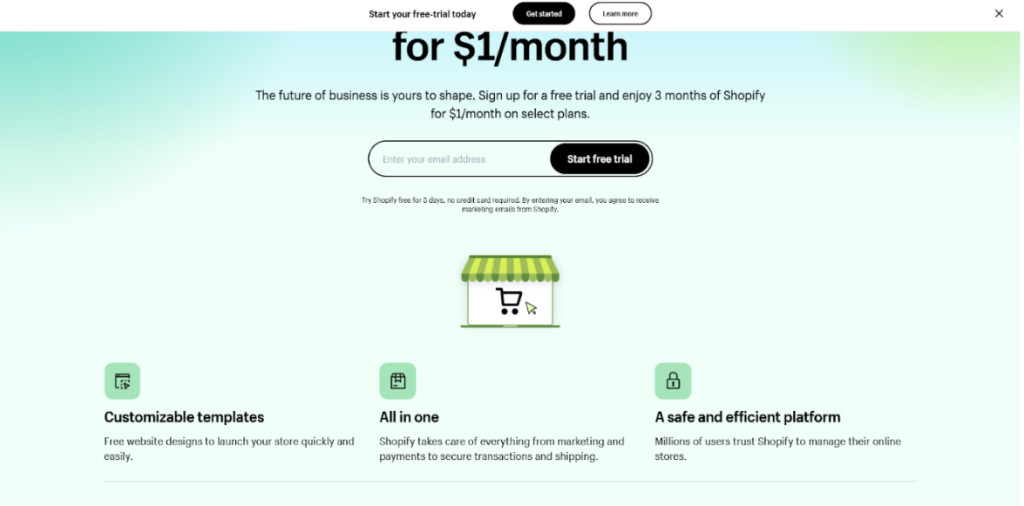
Now, A questionnaire will appear in front of you, answer some simple questions, for instance, where would you like to sell, where will your business be located, etc. After successfully answering the questionnaire, you will receive an email confirmation notification with your store URL from Shopify.
Step #3: Add Products to Your Store
After setting up your account on Shopify, you can add products to your store. Add products to your store via drop shipping apps. You can use Oberlo, the default dropshipping app provided by Shopify, to add products to your Shopify store.
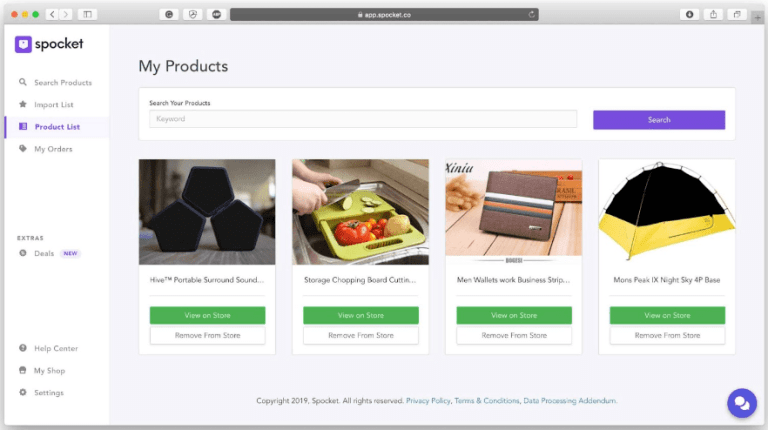
Follow these steps to add products to your store via Oberlo.
- Click on “more actions.”
- Click on “find more products to sell.”
- The Oberlo interface will appear on your screen. Use it to search for products and AliExpress suppliers.
- Search your product keyword in the search bar.
- Click “Select a product” to select the products you want to add.
- Go to the product page and add retail prices to your selected products.
- Click “add product” to allow Oberlo to add items to your Shopify store.
Edit the product descriptions, titles, and images, and give your product a product tag. Make it easier for your customers to navigate your product categories by creating a collection of products.
You can get various dropshipping apps online if you want something other than Oberlo. Here we have searched out the best dropshipping apps for you.
- Modalyst: Gives access to U.S. and Europe-based suppliers, AliExpress vendors, and wholesalers.
- Spocket: Dropship trendy and original products from U.S/E.U.
- Print full: This allows you to customize goods with your design.
- My online fashion store apps: U.S-based accessories and fashion drop shipper.
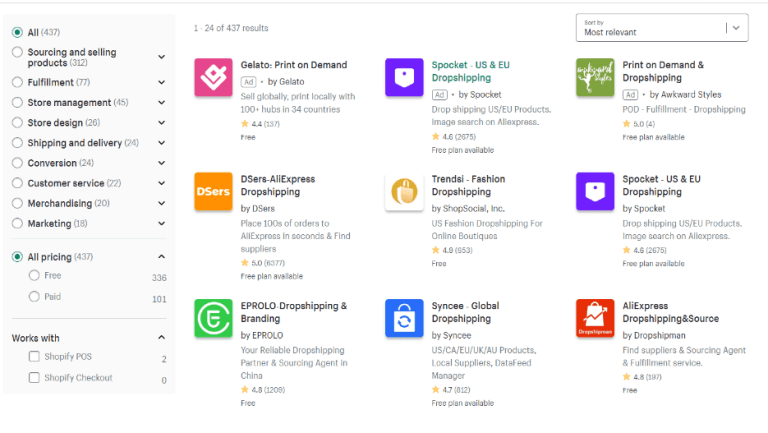
Step #4: Customize Your Store
Once you arrange your collection, you can design your store following the methods below.
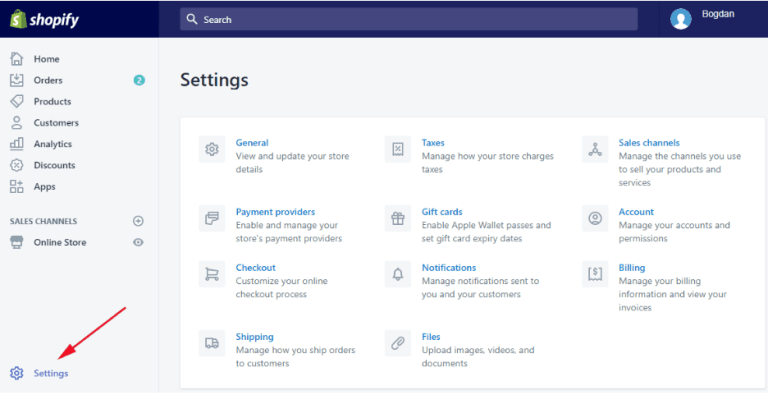
- Customize theme
Make your website more eye-catching using Shopify free themes or get paid themes from the marketplace. Choose a theme matching your keyword or product with clear and eye-appealing designs.
- Add pages
Please create a page including your product-related FAQs, shipping details, about us information, testimonials, returns, etc. To add pages to your website, click on the page link on the left-hand side menu of Shopify and select “add page.”
- Set up navigation
Choose what is visible to your customers by controlling the pages and collections on your main menu. Setting up your navigation allows a drop-down menu with information such as blogs, product categories, about us page, etc., to appear in front of your visitors.
- Add store policies
Create necessary store policies before starting your business. Shopify offers tools to automatically generate a standardized privacy policy, refund policy, and terms and conditions for your Shopify store. To get store policies on Shopify, click on the checkout tab, find the relevant field, and click on the generate button.
Step #5: Provide Payment Options
You can set up your payment options by clicking on the payment providers page under your Shopify dashboard. Shopify offers you various payment options, including PayPal, Shopify Payments, and Amazon Pay.
Dropshipping on Shopify: Pros and Cons
Neglecting any business’s pros and cons leads to future disappointment. So look over the pros and cons of dropshipping on Shopify before proceeding.
| Pros | Cons |
|---|---|
| Low-cost initial investment | Low-profit earning |
| Wide variety to sell | Unreliable suppliers |
| Easy to set up | Products under expectation |
| Shipping cost control | High-cost shipping |
| Easy to scale | Facepalm errors |
| Simple management | Customer service issues |
How Much Will it Cost to Dropship on Shopify?
You do not have to spend a single penny on setting up your online store on Shopify. Instead, Shopify offers a 3-day free trial to its users. In addition, Oberlo’s starter plan is freely available too.
However, you must purchase a paid plan to upgrade your account features and sell your products.
Here is the pricing for the paid plans of Shopify.
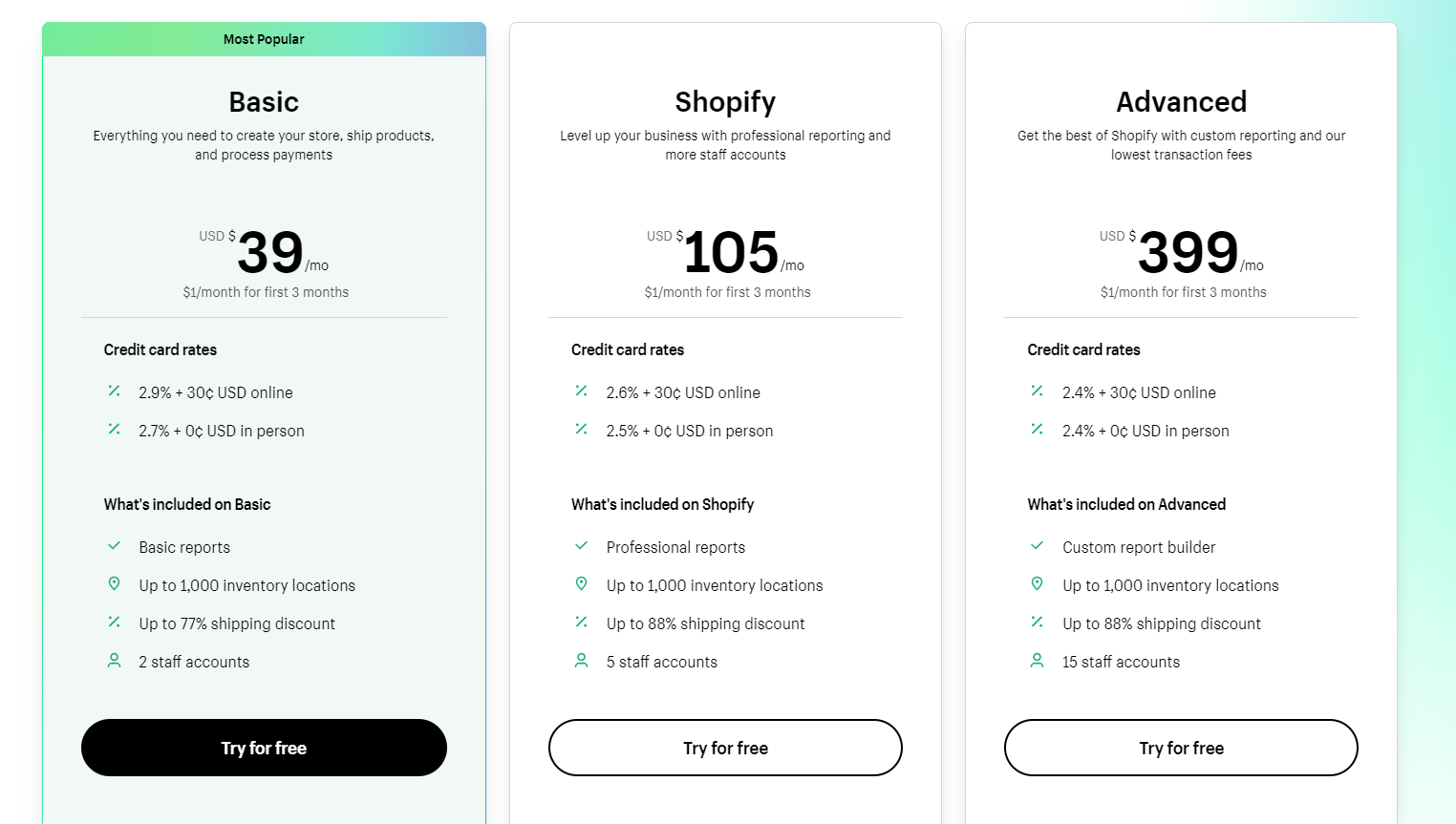
- Basic:$39/month
- Shopify:$105/month
- Advanced:$399/month
You must purchase an integrated Obrelo subscription plan to run your business through Shopify.
- Basic Shopify subscription:$39/month
- Boss Oberlo subscription:$29.90/month
- Domain through shopify:$14/month
Other than this, Shopify offers alternative plans for your business, including the Shopify Plus plan at $2000/month to get enterprise-grade solutions for high-volume businesses. In addition, you can get the starter plan at $5/month, which is ideal for selling products on social media platforms.
Tips To Run A Successful Shopify Dropshipping Business
Running a successful Shopify dropshipping business requires strategic planning, consistent effort, and adaptability. Here are some key tips to help you succeed:
1. Choose a Niche Wisely
- Research Demand: Use tools like Google Trends and Ahrefs to identify popular niches.
- Passion vs Profit: Balance your interest with profitability. Passion helps maintain motivation, but profitability ensures sustainability.
- Competition Analysis: Study your competitors to understand the market landscape and find gaps you can fill.
2. Select Reliable Suppliers
- Quality Assurance: Partner with suppliers known for high-quality products and reliable shipping.
- Communication: Establish clear and efficient communication channels with your suppliers.
- Reviews and Ratings: Use platforms like AliExpress to check supplier ratings and reviews.
3. Optimize Your Shopify Store
- User-Friendly Design: Ensure your store is easy to navigate with a clean, professional design.
- Mobile Responsiveness: Optimize your store for mobile users as a significant portion of online shoppers use mobile devices.
- Loading Speed: Use tools like LiteSpeed Cache to improve your store’s loading time, enhancing user experience and SEO.
4. Implement Effective Marketing Strategies
- Social Media Marketing: Utilize platforms like Facebook, Instagram, and TikTok to reach your target audience with engaging content.
- Email Marketing: Build an email list and send regular newsletters with promotions, product updates, and valuable content.
- Influencer Partnerships: Collaborate with influencers in your niche to expand your reach and credibility.
5. Provide Excellent Customer Service
- Timely Responses: Respond promptly to customer inquiries and complaints.
- Clear Policies: Clearly outline your return, refund, and shipping policies to build trust.
- After-Sales Support: Follow up with customers post-purchase to ensure satisfaction and encourage repeat business.
6. Utilize Analytics and Data
- Track Performance: Use Shopify Analytics to monitor your store’s performance, including traffic sources, sales, and customer behavior.
- A/B Testing: Conduct A/B tests on your website elements (e.g., headlines, call-to-action buttons) to determine what works best.
- Adjust Strategies: Regularly review your data to identify what’s working and what’s not, and adjust your strategies accordingly.
7. Focus on Branding
- Unique Identity: Create a strong brand identity that differentiates you from competitors.
- Consistent Messaging: Maintain consistent branding across all channels, including your website, social media, and email communications.
- Customer Connection: Build a connection with your audience through storytelling and by sharing your brand’s values and mission.
8. Stay Updated with Industry Trends
- Continuous Learning: Stay informed about the latest trends in dropshipping and e-commerce by reading industry blogs, attending webinars, and participating in forums.
- Adaptation: Be willing to adapt your business strategies in response to market changes and emerging trends.
9. Leverage SEO
- Keyword Optimization: Use relevant keywords in your product descriptions, titles, and meta tags to improve your search engine rankings.
- Content Marketing: Create valuable content such as blog posts, guides, and tutorials that attract and engage your target audience.
- Backlink Building: Build high-quality backlinks to increase your store’s authority and visibility in search engines.
10. Manage Finances Wisely
- Budgeting: Create a detailed budget to manage your expenses and investments.
- Cash Flow: Monitor your cash flow to ensure you have enough capital to cover operational costs and scale your business.
- Accounting Tools: Use accounting software to keep track of your finances and make informed decisions.
By following these tips, you can enhance your chances of running a successful Shopify dropshipping business. Remember, consistency and adaptability are key to thriving in the ever-evolving e-commerce landscape.
Related Read;
Summing Up!
Dropshipping on Shopify is an excellent way of entering entrepreneurship without dealing with the products in real time. The above article explains the detailed process to dropship on Shopify.
To sum it up, decide what you want to sell by following the trends in the marketplace and signing up on Shopify, providing your email address.
Fill out the questionnaire and use a dropshipping app to add products to your Shopify store. We recommend using Oberlo for this purpose once you finish designing your website and get started.
Furthermore, market your Shopify store on social media platforms to generate high revenue. We hope the above article has helped you understand how to dropship on Shopify.
Let us know your views on dropshipping on Shopify in the comments below.
FAQs: Dropship on Shopify
Dropshipping is a retail fulfillment method where the store purchases the products from a third party and ships them to the customer without handling the product directly themselves.
These are the best categories of dropship products.
1. Skincare
2. Pet products
3. Cell phones
4. Craft Supplies
Andreas Koenig and Alexander Pecka have reached the $10 million mark with a pet dropshipping company.
You need a reseller’s license to become a reseller on Shopify. However, you do not need a license to sell on Shopify.

This is Wagner, an experienced Amazon FBA expert, and eCommerce enthusiast. With years of experience selling on Amazon, I got a wealth of knowledge to share with fellow sellers. In their writing, I cover a range of topics including Amazon FBA strategies, eCommerce trends, and online retail best practices.
